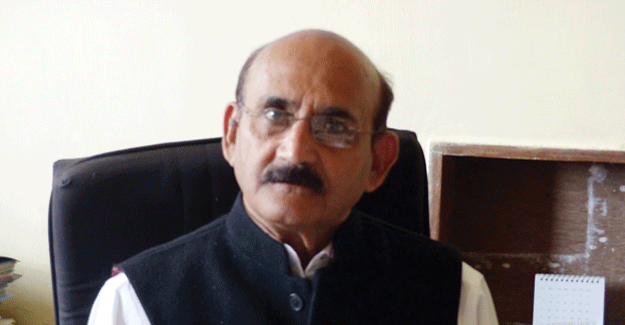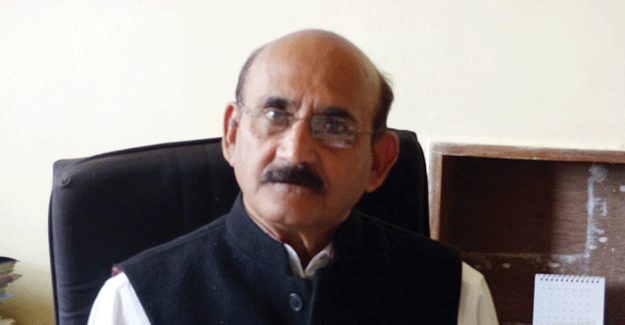
ATIRA's TRC Developments Have Been Much Appreciated By Industry And Government
ATIRA is probably one of the few TRAs in the country which has moved swiftly to produce marketable techhtex products. The TRA has installed industrial capacity machines, which can mass produce almost any kind of product. So, as a TRA, why did ATIRA feel the need to install such capacities? In an exclusive interview with Reena Mital, K K Misra, CEO, ATIRA, talks about the research institute's strategy and achievements.
While the Indian government has announced the setting up of incubation centres only recently, ATIRA already has an incubation centre. Tell us more about this facility.
ATIRA's incubation centre is a project funded by the Government of Gujarat. We set this up three years ago. And I cannot but help boast that this would be the only TRA in the country to have this range and size of machines. The incubation centre is for the industry to use. We have companies, institutes, students who come into the centre, develop products using our facilities. Companies can even test market their products and till the market achieves a level of maturity, they can continue to produce at the incubation centre. This is our way of supporting the Indian technical textiles industry. More than 50 companies have used our facility till now. ATIRA also is the Centre of Excellence for composites (under TMTT), and for FR treatments, nanotechnology and geotech. We are the only TRA with four CoEs. All our developments are centered around these four areas. NITRA is the CoE for Protech, the FR facilities that they do not have we have installed here. Nanotechnology CoE is under the Government of Gujarat. Here, we have invested in very high end machines, you will find only three such machines in the world.
What new developments is ATIRA into currently?
Our latest development, where we have received good response too, is the textile reinforced concrete (TRC) tiles, which is a German technology. TRC has many advantages over the traditional paver blocks which are 6-7 inch thick, TRC tile is of 1 inch thickness. We have used these tiles in the ATIRA campus, and also developed the machine for mixing concrete, etc. L&T will be using this product soon. We have signed an MoU with ISRO, for installing the tiles in the ISRO campus. Some textile parks have shown interest in TRC too. We have also developed TRC panels, which can replace concrete blocks and metals. We have built prototype WCs using TRC panels for walls and roof. The door is jute reinforced composite, which is anti-termite, fire retardant, water repellent. Sulabh International had asked us to demonstrate installation of these toilets in Dwarka in New Delhi, and appreciated this product very much. These WCs have many advantages over the conventional brick and mortar constructions. These are lightweight, and therefore easy to transport. They can be assembled on site with very little effort and labour. These are long-lasting, and almost maintenance-free. And most importantly, the cost of one WC would be around Rs 12,000, compared to Rs 25000 and more for a conventional WC. Sulabh International has ordered 5000 JRC doors from ATIRA.
What is the kind of response you have received here?
In Bihar's Lakhisarai, the district administration has ordered an initial 30,000 TRC toilets. A reputed builder from Southern India has signed an MoU with us for installing TRC toilets in all the southern states. We will give further demonstrations to state governments, NGOs and to entrepreneurs who can invest in this under their CSR programme. These can easily be manufactured in the area where the demand is, saving on logistics costs too. We will transfer technology. However, some parts will be given only by ATIRA, such as the columns and the mesh. With the Swach Bharat campaign, we expect that the market for TRC toilets has the potential to grow manifold. Another area of application is during building construction, where shafts are used. These are made of heavy metal. And L&T is exploring the use of TRC panels for such shafts. The company is also exploring the use of TRC to replace metal signboards. We are planning to build a 2-storey prototype house using TRC.
Why would you not transfer technology for the TRC columns?
The columns are made using pultrusion technology. This high end machine, from Martin USA, is the only one in Asia. A second such machine is installed in Russia. We have the machines and so can supply the columns. Here too, we have explored the versatility of the technology to make benches, ladders, which are very light weight and strong. Again, these are maintenance-free, you install a bench in a campus, and you don't need to maintain it in terms of painting, etc. You add resin, dyes, etc in the beginning of the process. We have installed benches made from pultrusion technology in our campus.
Tell us about your work in nanotechnology?
Here we have developed the lotus effect on fabric, that is, imparting the fabric with water repellent properties. We have worked towards revising the specifications of the Indian army uniform, to conform to higher US standards. We have educated companies manufacturing and supplying uniform fabrics of the upgraded specifications. With these new standards, the fabric would be more comfortable. Besides nanotechnology, we have also worked in laminating and coating of textiles. We have developed laminated aramid fabric for bullet-proof jackets. We have laminated fabrics for applications in steel foundries, for fire fighters, in furnishings such as blackout fabric, skid-resistant bath mats, high altitude clothing, etc. Here again, I want to stress that institutional buyers should come forward to drive the market. For instance, in FR fabrics, the railways can be an important user. If only Rajdhani trains' furnishings are converted to FR fabric, that itself will be millions of meters of consumption.
What other applications for institutional users such as Indian defence forces?
Only last week we received a report from DRDO, on a product that we have developed. This is for purifying sludge water, to make it drinking water. DRDO tested this in different locations, with perfect results, and will use this for soldiers posted in uninhabitable conditions.
Clearly, the products you have developed can find a market in India. An often asked question to TRAs is, how will you commercialise these interesting developments?
True, that the products have a market in India, and need an institutional push. And here is where we request that the government support us in commercialisation too. For commercialisation, we need funds that are 10 times larger than what is currently available to us. At present, we develop products, but these are prototypes, it needs something more to be commercially viable, for which funds are needed, so we can work with the private sector and develop a marketable product. For instance, we have developed cigarette filters, which reduce the nicotine intake. Now ITC has shown interest, and will develop the product further, it has the funds. We too will need funds if we have to market a product. To give one more example, to improve the cotton economy, we have developed an oil expeller machine. This machine will extract 2% more oil from the cotton seed, which could overall, bring in revenues worth Rs 900 crore. Not just that, the cake then used as fodder is healthier for the cattle, yielding more milk. The market for this machine has to be created by government agencies.

Textile Excellence
If you wish to Subscribe to Textile Excellence Print Edition, kindly fill in the below form and we shall get back to you with details.








